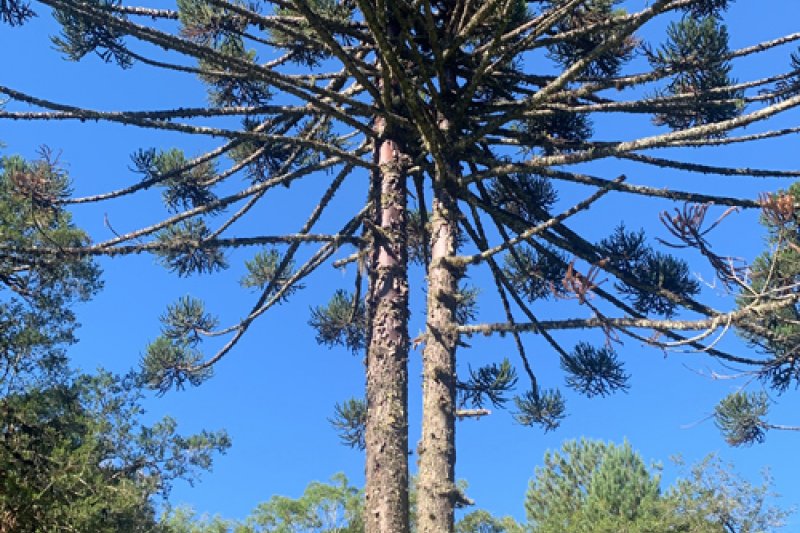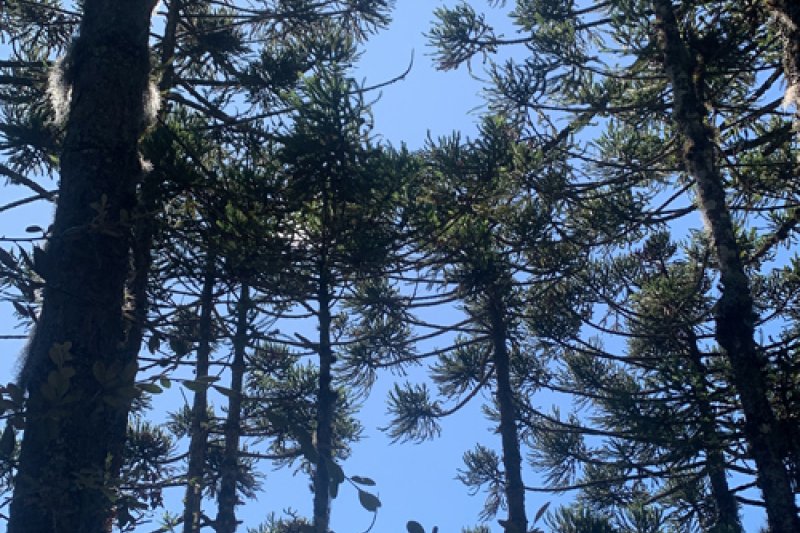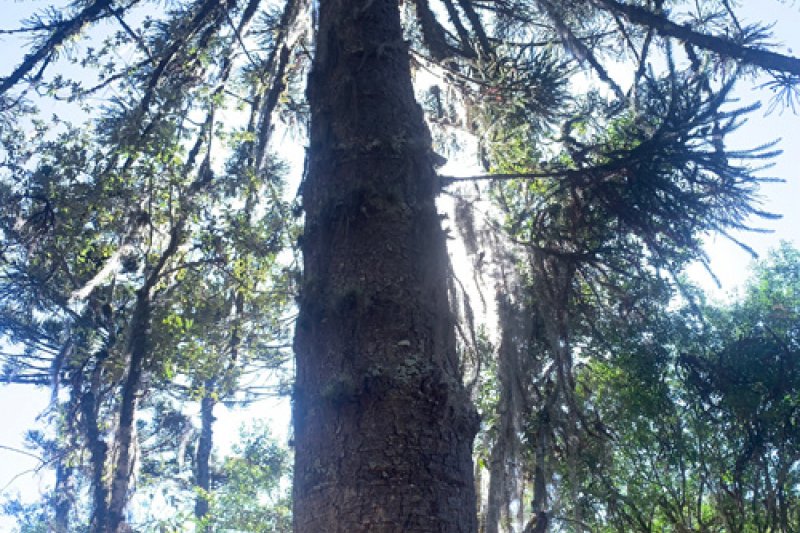Also known as the Paraná tree, the Araucaria is the city tree of Curitiba in Brazil -read my post on the town here. This conifer is native to the South of Brazil and can also be found in Argentina, Paraguay, and Uruguay. Other species grow in Chile and other parts of South America, some have even been planted in Europe. This evergreen can grow more than 40 meters tall and several meters in diameter. There is one specimen near Nova Petrópolis -Brazil- that has grown to become 45 meters high with a girth of 3.8 meters! Commonly, the male and female cones grow on separate trees and pollination occurs via the wind. Since 2008, this imposing and massive tree, of which the top resembles a candelabra, is considered endangered because it is losing its natural habitat to agriculture and wildfires. Every year, and in Brazil only, about 3.5 tons of pinhões -nuts extracted from the seeds in the cones- are consumed. Native animals, such as squirrels and birds, eat these nuts. The timber is used to make some types of furniture, quality paper, woodwork joints, and stair treads. Some folks believe the resin and essential oil have antibacterial, cytotoxic, anti-inflammatory, wound healing, anti-rheumatoid, anticancer, and sedative properties. A monumental stature to be admired in nature, you can also grow an Araucaria as a bonsai tree. It requires a well-drained, slightly acidic soil. Ideally, add some sand and peat to your planter. The Araucaria prefers subtropical temperatures -around 20 degrees Celsius- but can also tolerate occasional frosty temperatures down to -10 degrees Celsius. This tree loves being in the sun but the light needs to be diffused.
Happy gardening🌱




